exposed
Showing 73–84 of 135 results
-

Lactuca serriola / prickly lettuce
- numerous dime-sized yellow flowers in an "airy" panicle
- buds droop or hang in a "shepherd's hook" before opening
- seed heads are dandelion-like, but more delicate
- highly divided, prickly leaves
- mostly in "waste" areas
-
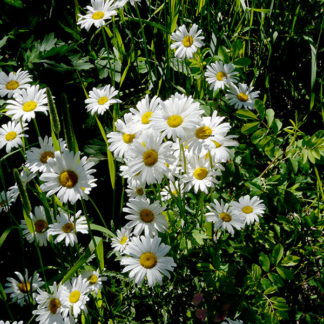
Leucanthemum vulgare / oxeye daisy
- bright, white "petals", 2-3" across; yellow centers
- s/he loves me, s/he loves me not
- glossy green, spoon-shaped leaves in a 2 foot dome
- may form large colonies
- potentially wide spread
-
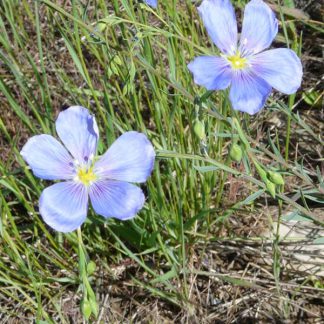
Linum lewisii / wild blue flax
- intense blue, 5-petaled flowers
- red-ish or darker blue veins in petals
- buds, flowers and developing fruit present at same time
- narrow, sessile, 1 inch (ish) leaves
- especially on roadsides and in meadows in the Valley
-

Lithospermum ruderale / Columbia puccoon
- small, pale yellow flowers in early spring
- flowers in dense clusters, nestled among the leaves
- 1–3 in. long, linear leaves, notably crowded on upper part of stems
- in dry areas, especially with sagebrush
-

Lomatium dissectum / fernleaf biscuitroot
- blooms soon after snowmelt
- yellow or purple-ish flowers in compound umbels
- highly divided, fern-like leaves
- rocks, rocky soils, sagebrush communities
-

Lotus corniculatus / birds-foot trefoil
- roadsides and other disturbed areas
- numerous bright yellow, pea-like flowers
- three, oval and pointed leaflets
- seed pods are arranged like toes on a bird's foot
-

Mahonia repens / creeping Oregon grape
- pinnately compound with toothed, holly-like leaflets
- clusters of yellow flowers in spring; blue berries in late summer
- low, creeping shrub
- evergreen - but winter leaves are reddish
-

Maianthemum stellatum / starry false Solomon’s seal
- blooms in late June (ish) in the Valley, mildly fragrant.
- teeny star-shaped flowers with 6 white tepals
- one inflorescence (raceme) per stem
- small berries progressing from green to purple to red with maturity
- alternate, long and narrow leaves clasping the stem
-
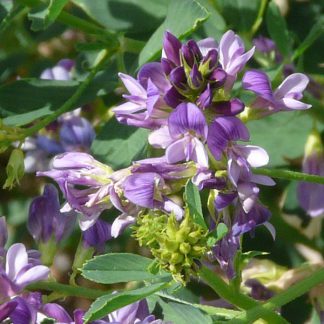
Medicago sativa / alfalfa
- escaped forage plant
- bright purple flowers in dense clusters
- pea-like flowers with broad upper petal, 2 small laterals, keel
- compound leaves with 3 leaflets, the central one extended on a short stalk
- disturbed sites - roadsides, full sun
-
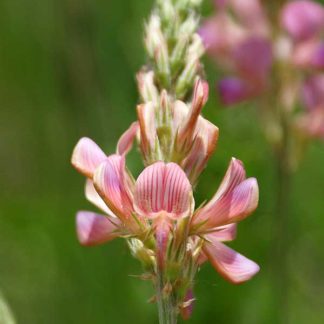
Onobrychis viciifolia / sainfoin
- forage legume, taller than alfalfa
- pink pea-like flowers with striped banner petal and darker keel
- spiky inflorescence (a raceme) blooming from bottom up - up to 50 flowers
- pinnately compound leaves with single terminal leaflet
- naturalized with sagebrush and mountain shrubs, but also in the central Valley
-

Opuntia fragilis / brittle pricklypear
- smallest pricklypear cactus; potato-shaped pads
- pads separate with lightest bump
- seldom flowers or fruits
-
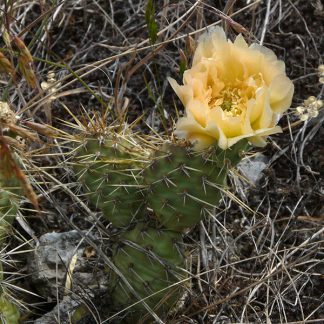
Opuntia polyacantha / starvation cactus
- yellow or peach, complex, many-petaled flowers
- large globose, pointed buds with reddish scales
- cactus pads with long or short spines and nasty glochids
Showing 73–84 of 135 results